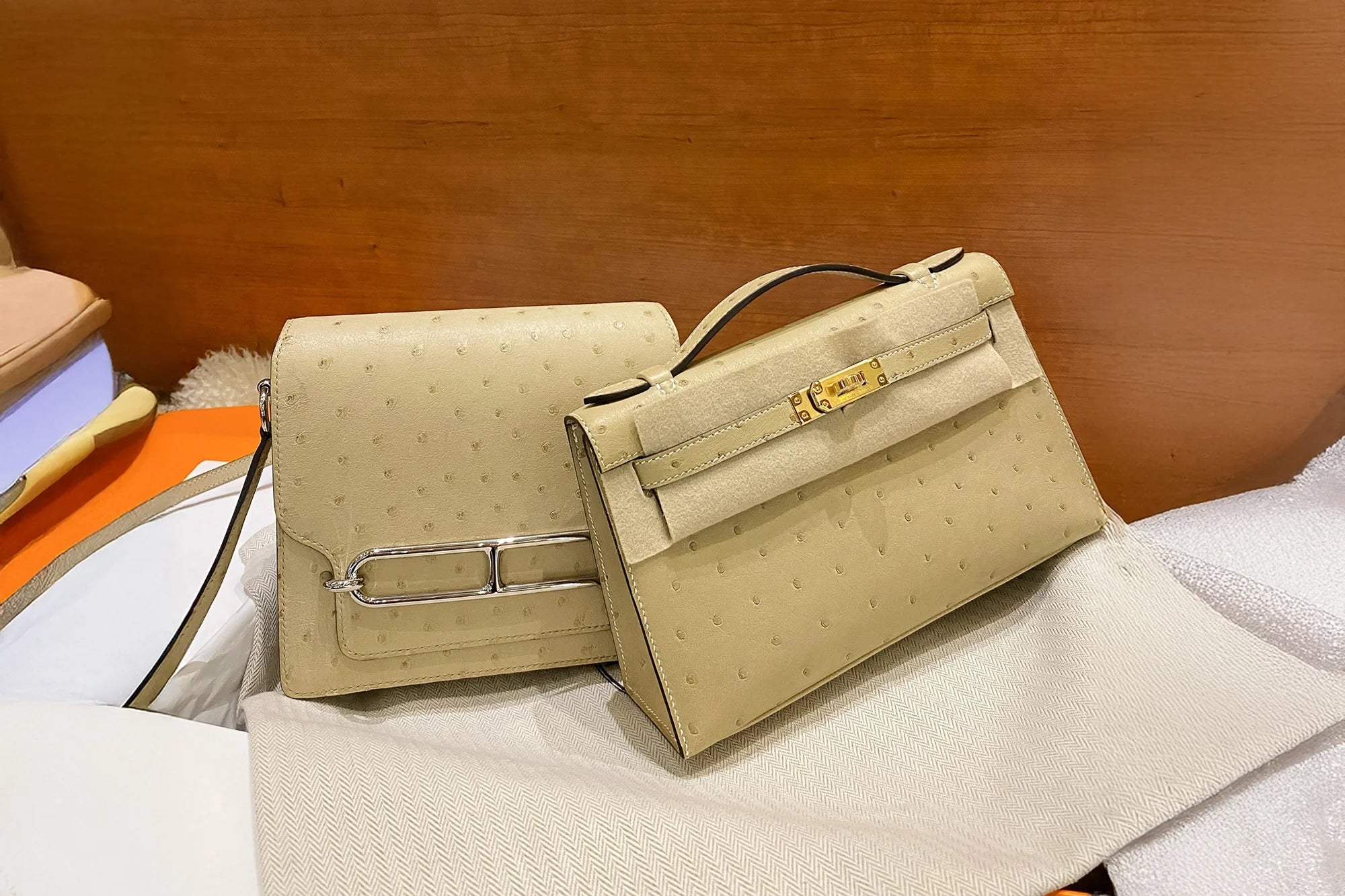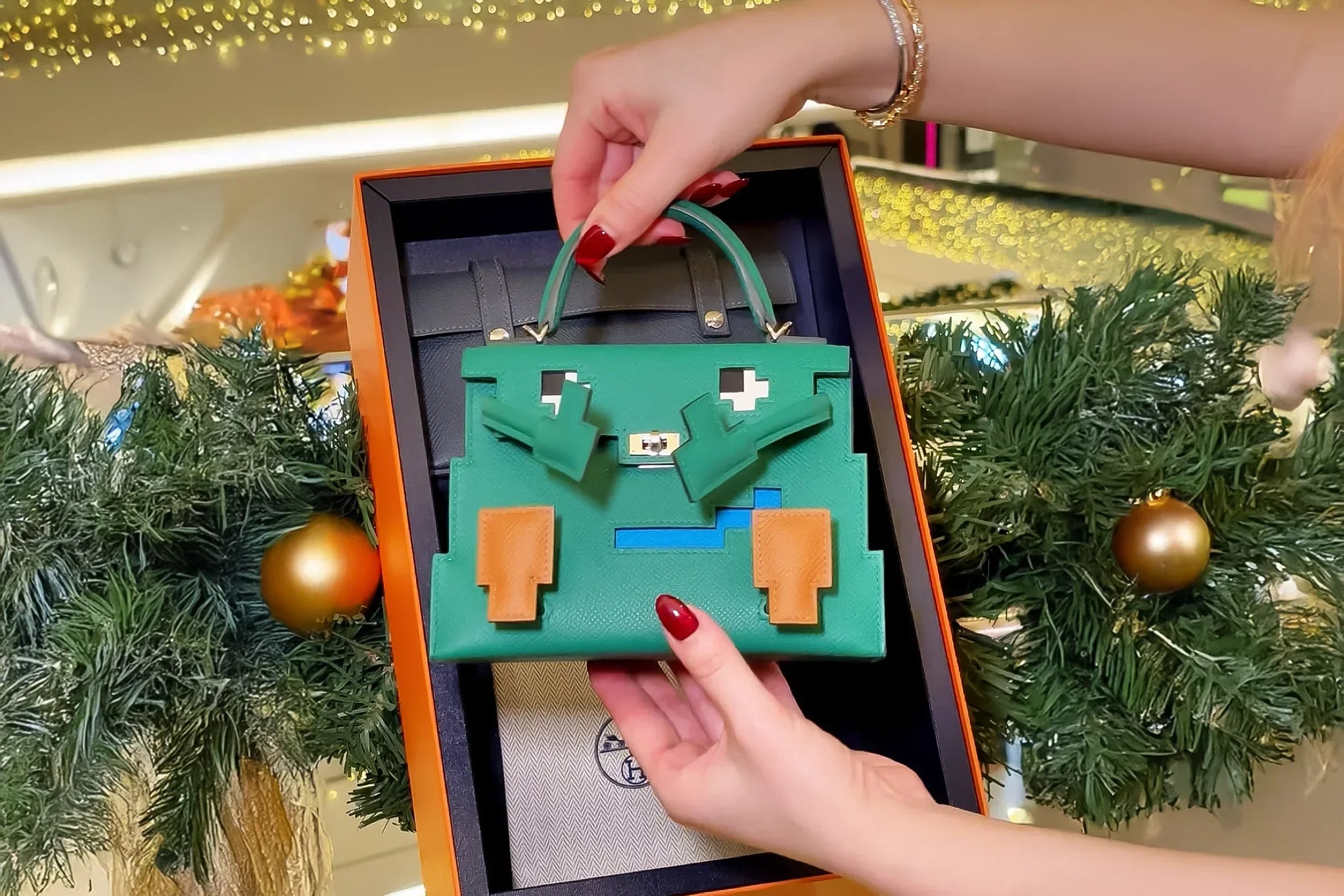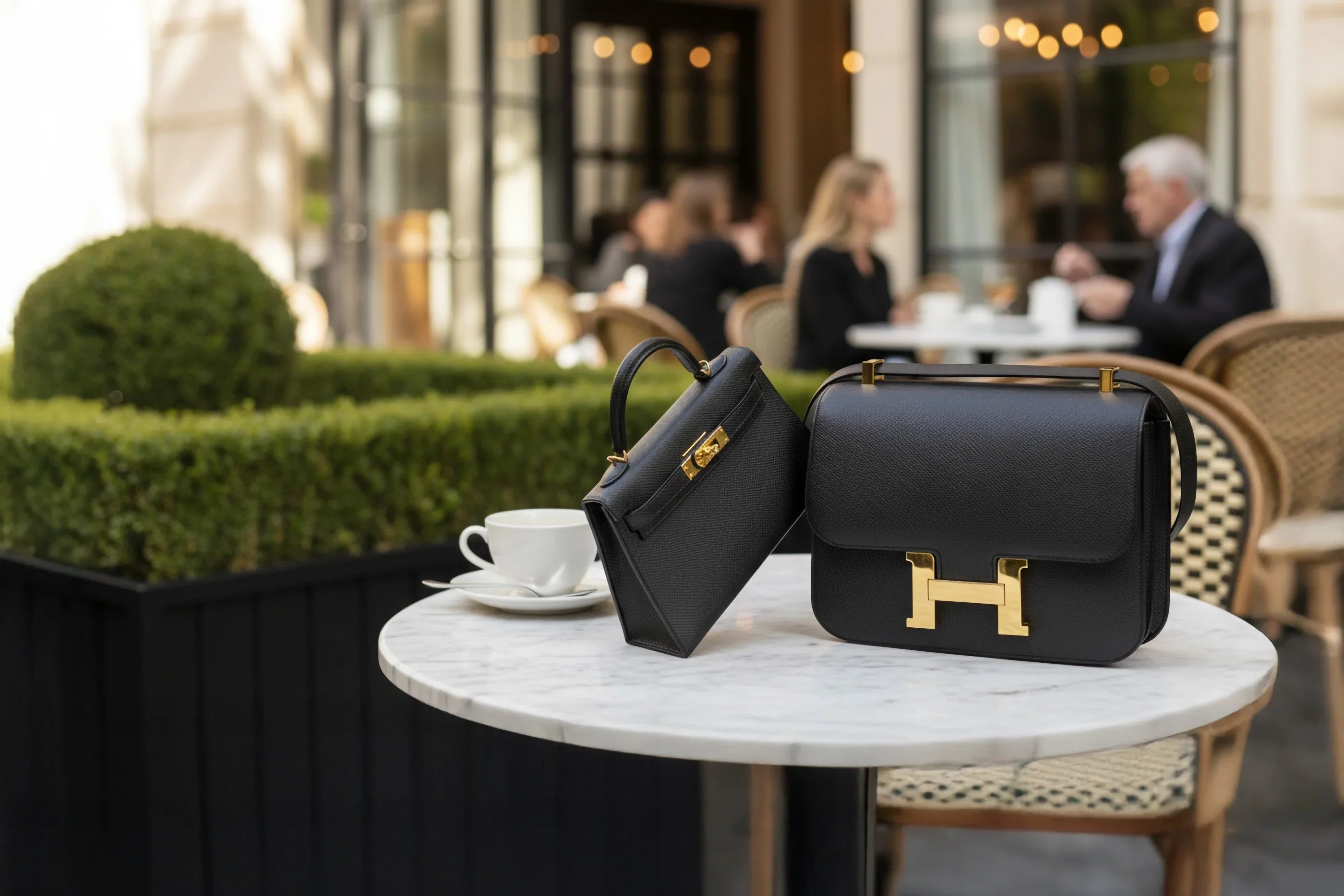
Predicting Luxury Bag Trends: Which Bags Could be Future Classics?
Check out our Hermès collection and Birkin bags!
The luxury handbag market keeps getting pricier, with designer prices soaring over the past few years. So, if you’re eyeing a bag as an investment, it’s smart to look for pieces that’ll hold or even grow in value, not just fade away after a season or two.
Classic silhouettes, think east-west shapes, flap bags, and top-handle clutches, are shaping up as top contenders for future icon status. Hermès and Chanel are really pushing these styles forward. They hit that sweet spot: timeless but practical, and honestly, isn’t that what you want if you’re collecting?
We’ve dug into current trends, watched what the big fashion houses are prioritizing, and tried to pin down what separates a flash-in-the-pan trend from something you’ll still love (and maybe profit from) years down the line. The bags on our radar walk that tightrope between newness and tradition, pieces that could easily become the next Kelly or Birkin in terms of reputation and value.
Key Takeaways
- Future classic bags lean into timeless shapes, not just whatever’s hot right now
- Luxury brands are doubling down on craftsmanship and luxe materials like suede and leather
- East-west, flap, and structured top-handle bags are poised to become the next generation of icons
What Makes a Luxury Bag a Future Classic?
What really sets a future classic apart from a fleeting trend? It’s a bag’s ability to stay relevant year after year, decade after decade. The recipe? Great design, top-notch materials, and a brand with real history.
Defining Classic vs. Trend-Driven Bags
Classic bags just have that staying power. Look at the Rome Station’s Hermès Birkin or a Chanel quilted flap, decades on, they’re still as coveted as ever.
Trend-driven bags? They’re all about the moment. A neon zebra-print might be fun now, but will you want it on your arm next year? Probably not. These bags chase novelty instead of timelessness.
Classic Bag Hallmarks:
- Clean, geometric lines
- Neutral colors
- Functional features
- Low on seasonal bells and whistles
Trend-Driven Bag Red Flags:
- Loud, attention-grabbing prints
- Oddball shapes
- Colors that scream “this season only”
- Gimmicky hardware
Classic handbags stick around because they blend in with evolving styles. They’re the backbone of a wardrobe, not just a one-hit wonder.
Key Elements: Design, Materials and Craftsmanship
Materials matter, a lot. Leather quality can make or break a bag’s future. Full-grain leather ages beautifully, while cheaper stuff just falls apart.
How a bag’s made is just as important. Hand-stitched seams, reinforced stress points, and solid hardware are what keep a bag going for years (or even decades).
| Element | Classic Standard | Trend Standard |
|---|---|---|
| Leather | Full-grain, premium hides | Corrected-grain, synthetic |
| Construction | Hand-stitched, reinforced | Machine-sewn, basic |
| Hardware | Solid metal, precise fit | Plated metal, loose tolerances |
| Finishing | Hand-polished edges | Basic edge painting |
Proportions are a big deal. Bags that aren’t too big or too tiny just seem to work, no matter what’s “in.”
Details like sturdy handles, smart closures, and well-designed interiors set investment-worthy bags apart from the rest.
The Role of Brand Heritage
Legacy matters. Brands like Hermès and Chanel charge more, partly because their bags come with stories that go back generations.
Consistency builds trust. When a brand keeps the quality up year after year, collectors feel good about putting money into their new releases.
Heritage Markers:
- Founded before 1950
- Quality that doesn’t dip across collections
- Decades of celebrity fans
- Vintage pieces that do well at auction
Some newer brands do break through, but they need to show serious vision and skill. Hermès’s craftsmanship and Chanel’s quilting prove you can still innovate inside a classic framework.
Honestly, bags from the old guard just tend to appreciate faster, even if the new kids are making bags just as well.
Spotlight on 2025's Emerging Iconic Bags
The vibe in luxury bags is shifting: think sharper, more structured shapes and smaller, more purposeful designs. The slouchy tote? Not so much anymore. Now it’s all about architectural lines and mini statement-makers.
The Rise of Structured Silhouettes
Structured bags are back in a big way. The floppy, shapeless tote is getting edged out by bags with crisp lines and real form.
Hot structural features:
- Sharp corners
- Minimal hardware
- Geometric outlines
- Bases that stand up on their own
East-West and Barrel Shapes Gaining Ground
East-west bags are everywhere, and barrel shapes aren’t far behind. Both offer practicality without sacrificing style.
The east-west design is just easy to use and looks sleek. We’re seeing it from compact crossbodies to roomy totes.
Why barrel bags work:
- Easy access from any angle
- Unique rounded look
- Comfortable to carry
- Efficient use of space
East-west bags, especially as crossbodies, just sit right and let you grab your stuff without fuss.
Standout Clutches and Micro Bags
Micro bags and bold clutches aren’t just a passing fad, they’re sticking around. They act almost like jewelry, instantly elevating what you’re wearing.
Why micro bags are sticking:
- Eye-catching shapes make them recognizable
- Luxe materials justify the price
- Work for day or night
- Collectible appeal for true fans
Clutches with unique closures or hardware are especially interesting right now. Brands are putting real effort into signature details that stand out.
The trick is to pick pieces with details that’ll feel fresh even years from now.
Leading Fashion Houses Shaping Future Classics
Three brands are really driving the conversation about what makes a bag a classic. They mix heritage with smart updates, creating pieces collectors actually want to keep for the long haul.
Chanel's Enduring Allure
Chanel pretty much wrote the rulebook on classic handbags with the 2.55 back in 1955. That history gives them a big leg up.
They keep expanding the idea of “classic” with new hits like the 19 and Boy bags. Each one keeps the Chanel DNA, quilted leather, chain straps, CC turn-locks, while fitting modern life.
Chanel pieces gaining ground:
- Gabrielle bag: relaxed hobo shape, mixed hardware
- Chanel 22: big, quilted, built for today’s needs
- Deauville tote: canvas and leather for a casual-luxe vibe
Chanel bags often hold their value better than most, and the waitlists and price hikes prove just how much collectors want them, whether it’s for love, investment, or both.
Revival of Heritage and Statement Pieces
Lately, luxury brands are raiding their own archives, reviving old favorites with a twist. These heritage pieces get updates that keep them feeling both nostalgic and fresh.
Retro Influences in Modern Bags
Luxury houses are digging deep for inspiration.
What’s coming back:
- Big, slouchy bags from the ‘80s
- Structured top handles that feel very ‘60s
- East-west shapes straight from ‘90s minimalism
Re-issues often gain value faster than brand-new designs. There’s just something about a bag with a backstory.
Craftsmanship and Materials Revolution
There’s a real shift happening in how luxury bags are made and what goes into them. Brands are doubling down on artisanal techniques, and using sustainable or rare materials is turning into a new kind of status symbol.
Handwoven Leathers and Detail Work
We’re seeing a big return to old-school craftsmanship that leaves machine-made bags in the dust. Artisans are hand-weaving leather into intricate patterns, sometimes spending weeks on a single bag.
Hermès’s saddle-stitching technique inspired a wave of similar styles. Every stitch demands precision and experience; there’s just no shortcut.
Old-world techniques making a comeback:
- Hand-stitched seams with visible topstitching
- Embossed leather created with heated metal tools
- Hand-painted edges needing multiple coats and polishing
- Custom hardware forged by skilled metalworkers
These labor-intensive methods give bags a soul you can’t fake. A little imperfection? That’s proof of the human touch.
Hermès still leads here with their saddle-stitching. Two artisans work from opposite sides, creating seams that outlast anything a machine can do.
Sustainable and Eco-Luxury Options
Plant-based leathers have moved beyond the experimental phase; they're quickly becoming the go-to choice for luxury brands that care about the future. Mushroom leather, crafted from mycelium, actually holds up surprisingly well against traditional cowhide. Some people still doubt it, but honestly, it’s getting harder to tell the difference.
Leading alternative materials include:
- Piñatex: Made from pineapple leaf waste
- Apple leather: Created from fruit industry byproducts
- Cactus leather: Derived from nopal cactus plants
- Lab-grown leather: Biofabricated without animal involvement
These materials aren't just about greenwashing. They’re getting close to matching the feel and lifespan of classic designer leathers. It’s impressive.
Brands have started to rethink the whole bag lifecycle. Now, they design with repairability, recyclability, and transparent sourcing in mind. That’s a shift that feels long overdue.
Unique Textural and Metallic Finishes
Surface treatments are quietly becoming the ace up the sleeve for luxury handbag makers. Some finishes shift their look in different lighting, others develop a one-of-a-kind patina as the bag ages. It's hard not to be a little obsessed.
Metallic details aren’t just about gold plating anymore. Designers are playing with titanium, brushed copper, even precious metal inlays that add real depth.
Innovative textural techniques include:
- Laser-etched patterns casting subtle shadows
- Heat-treated leather that crackles naturally
- Mineral-infused coatings that change color
- Vacuum-formed panels for sculptural shapes
These finishes aren’t easy to pull off, you’ll only find the right equipment in a handful of workshops. That rarity is part of the charm.
Chanel’s latest collections, for example, show off quilted leather threaded with metallic filaments. Depending on the angle, the bag catches the light in totally new ways. It’s a little bit magic, a little bit master craftsmanship.
Runway Trends and Real Life: Street Style's Influence
The leap from runway to real life is where luxury bags either become classics or fade out. Street style, celebrity sightings, and smart buying decisions all play a part in whether a bag sticks around or not.
Adoption of High-Fashion Bags in Street Style
Street style photographers catch that moment when a runway piece turns into something wearable. Chanel's 2.55 bag is a prime example, its clean lines look amazing in city settings but still make sense for daily use.
And honestly, the feedback loop is real. Sometimes street style trends, like a certain shape or function, end up influencing the next season’s collections.
Celebrities and Influencers Driving Demand
Celebrity sightings can launch a bag into the stratosphere overnight. Models like Elsa Hosk and Jasmine Tookes are often spotted with new releases before anyone else can get their hands on them.
Social media takes these moments and runs with them. One well-timed Instagram post can send demand soaring, leading to months-long waiting lists. We’ve seen it happen more than once.
Timing matters. Bags that show up during major events or award shows gain way more traction than those that quietly appear off-season. Celeb stylists know this game all too well.
When influencers and luxury brands team up and it feels genuine, it can introduce bags to new crowds without killing the exclusivity. The trick is finding the right fit between influencer vibe and brand identity.
Future Proofing Your Investment
If you’re thinking about long-term value, a few things matter most: build quality, brand heritage, and timeless design. We tend to look for brands with a solid resale track record.
Versatility is huge. Bags that look good dressed up or down stick around longer. They just work, whether you’re heading to a meeting or out for brunch.
Limited editions and core collections play different roles. Staples like Chanel’s 2.55 keep steady demand, while limited runs might spike but then fade. It’s a bit of a gamble.
Keeping an eye on fashion week and street style coverage can give you clues. Bags that keep showing up season after season usually have real staying power.
Frequently Asked Questions
What actually sets a future classic apart? It’s a mix of design, materials, and a bit of market magic. Spotting these factors early could help you pick the next big thing.
What are the key features that could make a high-end bag a timeless piece for 2025?
Bags with clean, structured shapes and minimal hardware seem to age best. Take Chanel’s 2.55 bag, quilted, simple, and all about the leather.
Top handles plus detachable straps are a smart combo. You can carry them different ways, so they fit both day and evening looks.
Quality leather is still non-negotiable. Calfskin or even exotics like crocodile last longer and look better with age.
Subtle branding wins out over big logos. People are shifting focus to the actual craftsmanship instead of flashy symbols.
Which designer handbags are tipped to become investment pieces in this year's fashion cycle?
Hermès’s Kelly Bag mixes classic vibes with a relaxed twist. Early fans like Hailey Bieber and a campaign with Nicole Kidman suggest it’s going places.
Chanel’s Gabrielle bag hit the spring 2025 runways and already has insiders buzzing. Its hobo silhouette feels classic but fresh.
Hermès’s Birkin is a nod to Lauren Hutton’s iconic 1980s look. Rihanna keeps wearing it, which is always a good sign for longevity.
Chanel’s Boy bag riffs on their popular shoulder bag. The shape sold out quickly, quirky, but it works.
Could you highlight some emerging trends from the 2025 Spring/Summer collections that might influence future classic status?
Bags with east-west shapes are everywhere right now. They’re practical, finally, something that fits a laptop without being a suitcase.
Doctor bag styles are popping up too, adding a bit of old-school structure that works for both the office and the weekend.
Soft suede is having a moment. It adds warmth and a tactile feel without losing sophistication.
Office-ready totes look more polished than before, probably reflecting the return to dressing up for work. They strike a balance between function and luxury.
What style shifts are we seeing in the luxury bag market that point to potential future classics?
Clutches are making a comeback as everyone moves away from over-the-shoulder bags. Designers are even turning their popular day bags into evening-friendly versions.
Oversized bags are fading; more moderate sizes that carry just the essentials seem to have more staying power.
Structured, architectural shapes are back, replacing the slouchy bags we saw everywhere for a while. This feels like a move toward more formal, lasting styles.
Minimal hardware is in. Simple closures and clean lines let the design speak for itself.
Any up-and-coming designers we should keep an eye on for potentially iconic bag designs?
Some smaller luxury brands are gaining traction by focusing on craftsmanship and limited runs. That scarcity can drive collectibility down the line.
And let’s not forget independent designers with a strong celebrity following. A little social media buzz can push a niche brand into the spotlight almost overnight.
What materials or craftsmanship details are being favoured in luxury bags that might dictate tomorrow's classics?
Smooth calfskin keeps its reputation as a go-to for durability and how gracefully it ages. Over time, it picks up a patina that just works, all while holding its shape.
Designers are leaning into exotic skins, think crocodile or those lizard-effect leathers. These materials, honestly, tend to keep their value longer than your standard leather. They also just feel special when you see them on a bag.
Hand-stitching has become a real draw. People want to see those little marks of human effort, and it's not just about the look; it signals care and skill. You can spot the difference, and it adds a certain honesty to the luxury vibe.
Chanel's quilting is everywhere now, inspiring other brands to experiment with their own leather textures. It's a painstaking process, but the result? Those intricate patterns make a bag stand out and, yeah, they kind of justify the price tag.
Calf hair finishes are popping up more, too. They give bags a bit of tactile interest without losing that polished feel. Chanel's bags are a good example, it shows how calf hair can swing between dressed-up and everyday looks.




